Disclosure: This article contains affiliate links. We may earn a commission from purchases at no extra cost to you, which helps our travel content.
The first time I landed in Auckland, I expected just another big city—a brief stopover before heading to New Zealand's famed landscapes. How wonderfully wrong I was. Straddling two harbors with dormant volcanoes dotting its skyline, Auckland offers a photographer's playground where urban architecture meets Polynesian influences and pristine nature. What makes this city truly special is how dramatically it transforms through the seasons, each offering distinct photographic opportunities. After five visits spanning every season over the past decade (including one memorable three-week stay when my flight to Christchurch was repeatedly canceled due to volcanic ash), I've compiled this guide to help fellow photographers capture Auckland's many moods—from summer's golden harbors to winter's moody urban reflections.
Essential Gear for Auckland's Changeable Climate
Auckland's weather has a reputation for delivering 'four seasons in one day,' making versatile gear essential for any serious photographer. I've learned—sometimes through rain-soaked equipment—that preparation is everything.
First, invest in a weather-resistant camera bag. My camera backpack has saved my equipment countless times during Auckland's notorious sudden downpours. The side access panels are particularly useful when you need to quickly grab your camera to capture those fleeting moments when the sun breaks through storm clouds over the harbor.
Lens selection requires careful consideration. I typically pack a wide-angle (16-35mm) for cityscapes from Mount Eden and architectural shots in the CBD, a versatile mid-range zoom (24-70mm) for street photography in neighborhoods like Ponsonby and Parnell, and a telephoto (70-200mm) for capturing distant islands in the Hauraki Gulf. If you're visiting during winter (June-August), consider bringing a fast prime lens—the low f/1.8 or f/1.4 aperture will be invaluable for the shorter days and moody light.
Filter-wise, Auckland's coastal setting means a polarizing filter is non-negotiable. It cuts through water reflections in harbor shots and enhances the vivid blues that appear after rain showers. For summer sunset shoots at Piha or Muriwai beaches, graduated ND filters help balance the bright sky with darker foregrounds.
Don't forget to weatherproof your kit. Auckland's humidity can be surprisingly high, especially in summer. I always pack silica gel packets in my camera bag and a rain cover that can be deployed in seconds.
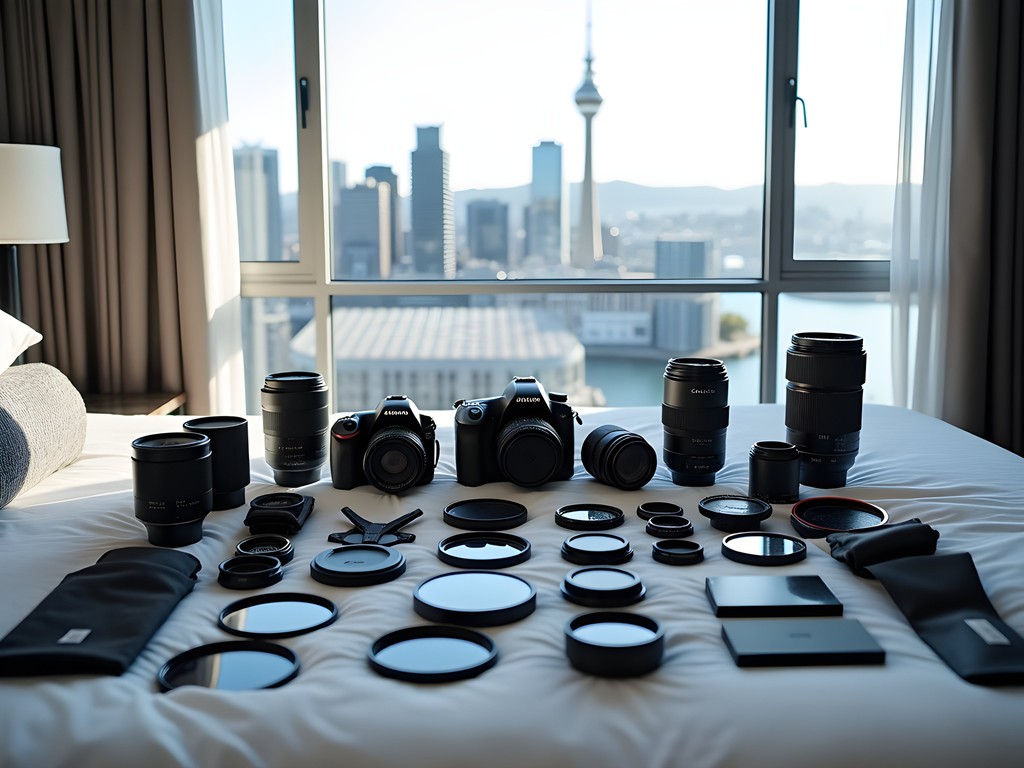
💡 Pro Tips
- Pack a microfiber cloth to wipe sea spray from lenses when shooting along the coast
- Use a remote shutter release for long exposures of the harbor at dawn/dusk to minimize camera shake
- Bring twice as many batteries as you think you'll need—cold winter days drain them quickly
Summer: Golden Harbors and Volcanic Vistas
December through February delivers Auckland's longest days and most reliable weather, making it prime time for photographers seeking those golden hour shots. The sun doesn't set until nearly 9 PM in January, providing extended shooting opportunities after dinner.
My favorite summer sunrise location is North Head Historic Reserve in Devonport. Arriving by 5:30 AM puts you in position as first light illuminates the city skyline across the harbor. The old military tunnels and gun emplacements offer perfect framing elements for your composition. The ferry ride from downtown takes just 12 minutes, though I prefer driving so I can bring my carbon fiber tripod, which handles the coastal winds while remaining light enough for the uphill walk.
For midday shooting (typically challenging due to harsh light), head to Auckland Domain and the Winter Gardens. The glasshouses create beautiful diffused light for macro photography of exotic plants, while the fernery mimics the dappled light of New Zealand's native forests. The Auckland Museum's neoclassical architecture also photographs beautifully against summer blue skies.
Summer evenings call for coastal magic. Muriwai Beach on the west coast offers dramatic black sand and the annual gannets colony (present from August to March). Arrive 90 minutes before sunset and follow the boardwalk to the viewing platforms. The birds backlit against the Tasman Sea create spectacular opportunities for wildlife photography with landscape context. Bring a zoom lens to capture both wide establishing shots and intimate bird behaviors.
One summer evening secret: the weekly night markets in various Auckland suburbs. Glenfield Night Market (Sundays) offers vibrant street photography opportunities with diverse food stalls illuminated by colorful lights. The steam rising from cooking stations creates atmospheric elements that add depth to your images.
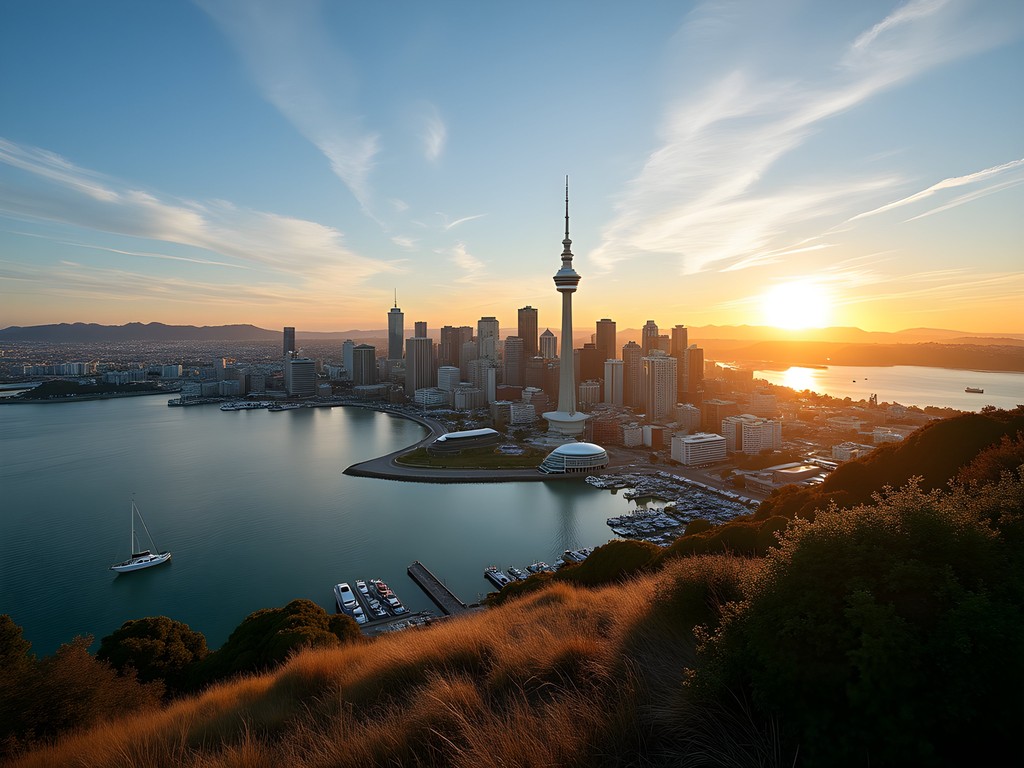
💡 Pro Tips
- Use a graduated ND filter when shooting Auckland's skyline from across the harbor to balance exposure between sky and water
- Visit Wynyard Quarter marina at blue hour (just after sunset) when boat lights create perfect reflections
- For crowd-free beach shots, photograph Takapuna Beach at sunrise rather than sunset
Autumn: Urban Parks and Cultural Festivals
March through May brings Auckland's most photogenic urban landscapes as introduced tree species transform parks into canvases of red and gold. While not as dramatic as North American fall foliage, the contrast of autumn colors against the evergreen native plants creates uniquely New Zealand compositions.
Auckland Domain becomes my autumn playground, particularly the formal gardens surrounding the museum. Morning fog often lingers until 9 AM, creating ethereal scenes as joggers and commuters move through the mist-shrouded pathways. Position yourself along the oak-lined avenues and experiment with telephoto compression to stack layers of colorful trees. A polarizing filter helps cut glare on wet leaves after overnight rain.
Cornwall Park offers my favorite autumn panorama. The 1.5km walk to the summit of One Tree Hill (Maungakiekie) rewards photographers with 360-degree views across the city. The surrounding parkland features mature trees that create pockets of fall color among the volcanic landscape. I typically arrive mid-afternoon and stay through sunset when the lowering sun illuminates the autumn foliage from behind, creating that magical translucent glow in the leaves.
Autumn also brings cultural festivals that provide rich photographic opportunities. The Auckland Lantern Festival (usually late February/early March) transforms Albert Park into a wonderland of illuminated displays. For these night shoots, I mount my camera on my trusty tripod and use a combination of long exposures and controlled ISO to balance ambient light with the colorful lanterns.
Don't miss the Pasifika Festival (typically March), the largest Pacific Island cultural festival in the world. The vibrant costumes, performances and cultural demonstrations offer endless opportunities for compelling portraits and action shots. I recommend using a mid-range zoom lens that lets you capture both environmental context and close-up expressions without constantly changing position.
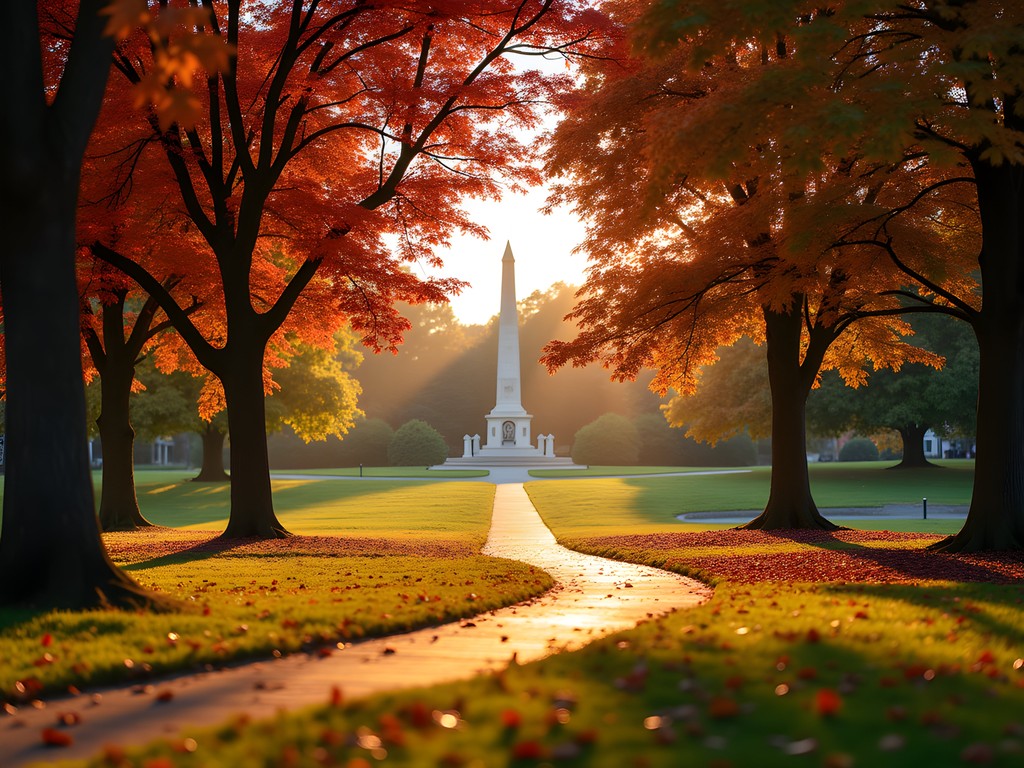
💡 Pro Tips
- Use a circular polarizer when photographing autumn foliage to reduce glare and enhance color saturation
- For festival photography, seek elevated positions (steps, benches) to shoot over crowds
- Visit Western Springs Park at sunset when autumn leaves create golden reflections in the lake
Winter: Moody Harbors and Urban Reflections
June through August delivers Auckland's most challenging but potentially rewarding conditions for photographers. The winter light has a crystalline quality that creates dramatic contrast, especially after rain showers clear the air.
Winter mornings often bring fog to the harbor, creating mystical conditions for minimalist compositions. Westhaven Marina becomes my winter sunrise spot—the forest of masts emerging from the mist makes for compelling imagery. I typically arrive 30 minutes before official sunrise and use long exposures (1-3 seconds) to smooth the water's surface while capturing the transition from blue hour to golden light.
The glass and steel canyons of the CBD become particularly photogenic during winter rain. After a downpour, head to Queen Street and capture the reflections in puddles and wet pavement. The early sunset (around 5:30 PM in June) means you can photograph blue hour while businesses are still illuminated, creating that perfect balance between natural and artificial light.
For dramatic seascapes, winter storms at Piha or Karekare beaches on the west coast deliver powerful imagery. The massive waves crashing against Lion Rock create dynamic opportunities for capturing nature's force. Safety is paramount—never turn your back on the ocean and stay well back from the water's edge. I protect my weather-sealed camera with additional rain covers and keep lens changes to a minimum in these conditions.
One winter secret: the Auckland War Memorial Museum is illuminated with projected light shows on winter evenings. The neoclassical columns create perfect symmetry against the night sky, and the changing projections offer endless creative possibilities. Bring a tripod and remote shutter release for these night shoots.
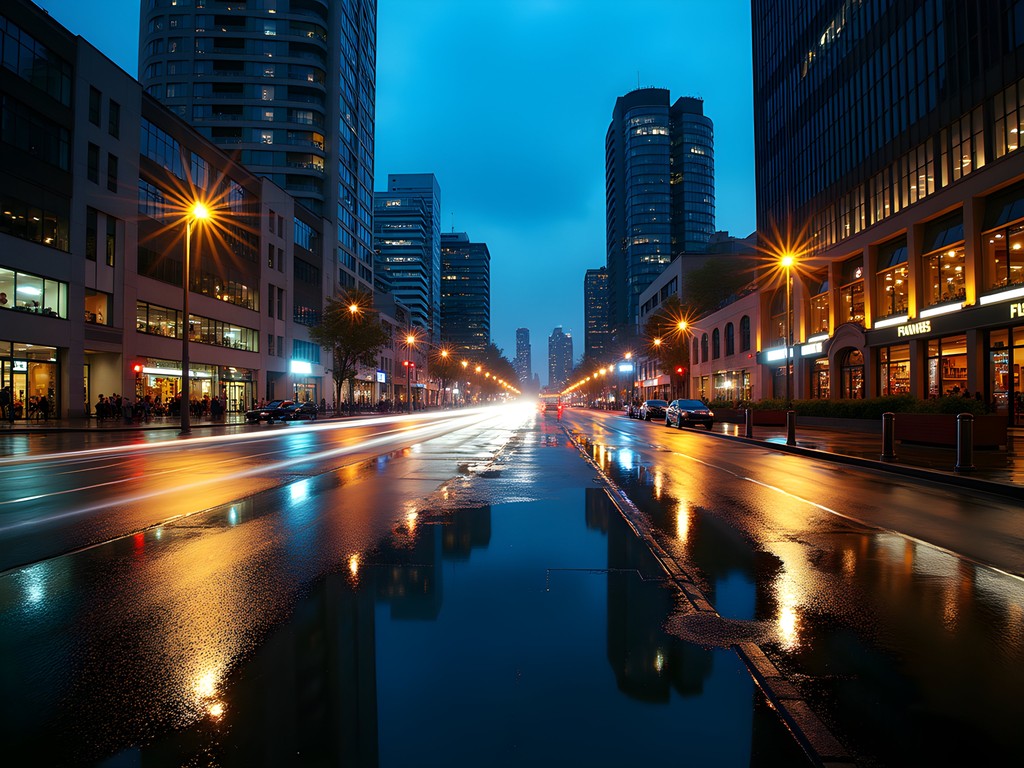
💡 Pro Tips
- Use a microfiber cloth to quickly dry your lens between shots when photographing in rain or sea spray
- For night cityscape photography, bracket your exposures (±2 stops) to ensure you capture all the dynamic range
- Shoot winter seascapes at faster shutter speeds (1/250 or higher) to freeze dramatic wave action
Spring: Coastal Blooms and Volcanic Viewpoints
September through November brings Auckland's most changeable but rewarding conditions. Spring winds can challenge photographers but also create dramatic skies and clear visibility for landscape shots.
Start your spring photography journey at Auckland Botanic Gardens in Manurewa. The 64-hectare gardens burst with color as native and introduced species bloom in sequence. The Native Plant Trail showcases New Zealand's unique flora, including the iconic silver fern and various endemic trees. For macro photography, visit early morning when dew still clings to spider webs and flower petals. My macro lens rarely leaves my camera during spring visits—it's perfect for capturing the intricate details of native flowers while creating beautiful bokeh with the surrounding foliage.
Mount Eden (Maungawhau) offers my favorite spring cityscape opportunity. The dormant volcano's crater rim provides 360-degree views, with the city skyline to one side and Rangitoto Island on the other. Spring's clear days after rain showers deliver exceptional visibility. Arrive two hours before sunset to scout compositions, then stay for blue hour when the city lights create a perfect balance with the darkening sky.
For coastal photography, spring brings pohutukawa trees into early bloom along the eastern beaches. Achilles Point in St Heliers offers a perfect vantage point where these distinctive red-flowering trees frame views across to Rangitoto Island. The combination of volcanic islands, azure waters, and flowering native trees creates quintessentially Auckland compositions.
Don't miss the Tiritiri Matangi Island day trip—a photographer's paradise in spring. The restored wildlife sanctuary offers close encounters with rare native birds among blooming native plants. The ferry journey itself provides unique perspectives of the Auckland skyline receding behind you. Pack a telephoto zoom for wildlife and a wide-angle for landscape contexts. The island has no food services, so bring supplies for a full day of photography.

💡 Pro Tips
- Use a lens hood to prevent flare when shooting toward the sun in spring's clear conditions
- For pohutukawa blooms, underexpose slightly to preserve the intense red color that cameras often overexpose
- Visit Shakespear Regional Park for spring lambs against harbor backdrops—arrive early morning for best light
Final Thoughts
Auckland may not initially register on most photographers' bucket lists, but its seasonal transformations offer remarkable creative opportunities for those willing to look beyond the obvious. What I've grown to appreciate most about photographing this city is how it rewards patience and return visits—each season revealing new dimensions to familiar locations. Whether you're capturing winter reflections in urban puddles or summer light on volcanic cones, Auckland offers a masterclass in versatile city photography. As with any destination, the most compelling images emerge when you embrace the conditions rather than fight them. So pack your filters, embrace Auckland's changeable weather, and prepare to capture a city that defies simple categorization. And when you think you've seen it all, just wait for the season to change—Auckland will show you another face entirely.
✨ Key Takeaways
- Pack versatile weather protection for your gear as conditions can change rapidly
- Visit volcanic viewpoints at dawn/dusk for the best light on the cityscape
- Each season offers distinct photographic opportunities, from summer's golden harbors to winter's moody reflections
- Allow time to revisit key locations in different weather conditions for varied perspectives
📋 Practical Information
Best Time to Visit
Year-round, though March-May offers most stable conditions
Budget Estimate
$150-250 NZD per day including accommodation and transportation
Recommended Duration
5-7 days
Difficulty Level
Moderate

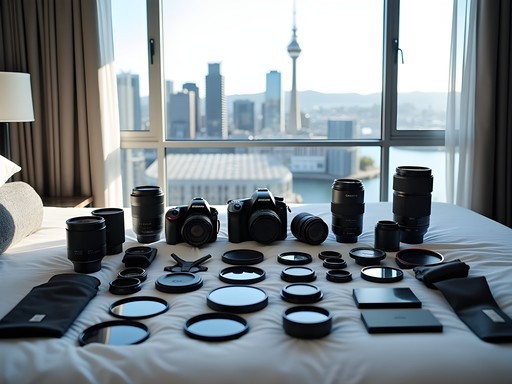
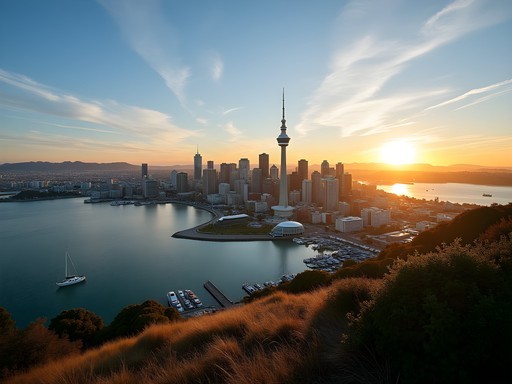
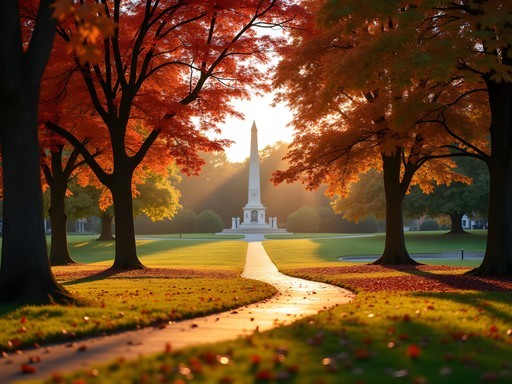
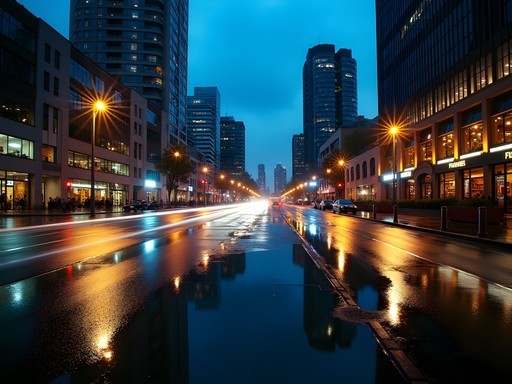
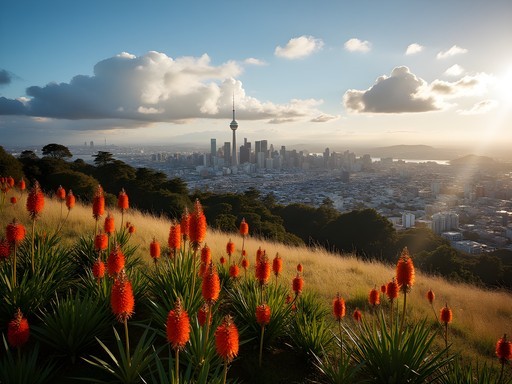


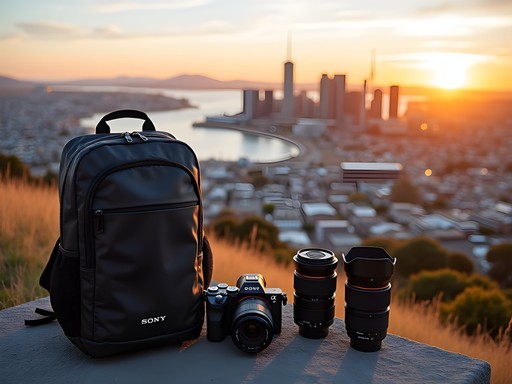
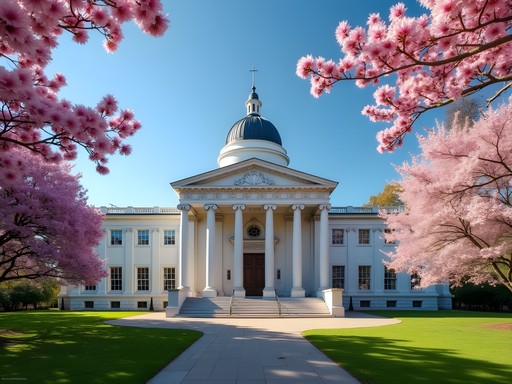






Comments
coolnomad
Great post! I'm a beginner photographer visiting Auckland in autumn next year. Which ONE location would you recommend as a must-visit for capturing the seasonal colors? Also, will a basic mirrorless camera be enough or should I invest in something more advanced?
Evelyn Rogers
For autumn colors, Auckland Domain is my top pick! The paths lined with deciduous trees create stunning golden tunnels, and you get the beautiful Auckland Museum as a backdrop. A basic mirrorless is absolutely fine - it's more about timing and light than gear. Just bring a polarizing filter to make those autumn colors pop!
coolnomad
Thanks so much! Auckland Domain it is. Will definitely get that polarizing filter too.
Douglas Bradley
Excellent breakdown of Auckland's photographic potential through the seasons, Evelyn. I spent three weeks there last winter documenting the harbor in various weather conditions, and your assessment is spot on. The moody reflections after rain are particularly compelling for street photography. One addition I'd make is to consider the lighting at Wynyard Quarter during winter evenings - the combination of modern architecture and wet surfaces creates striking compositions. For those planning a visit, I found my weather-sealed zoom invaluable for Auckland's unpredictable conditions. The weather truly can change multiple times in a day, especially in spring.
coolnomad
Douglas, did you find it difficult to capture good photos during winter with the rain? I'm planning a trip in July next year and wondering if I should postpone.
Douglas Bradley
Not at all, coolnomad! Winter offers dramatic skies and fewer tourists. Just bring weather protection for your gear and embrace the moody aesthetic. The rain creates gorgeous reflections on Queen Street and along the waterfront. Some of my best Auckland shots were taken between showers when the light breaks through.
oceanlover
I was in Auckland last summer and was blown away by those golden harbor views you mentioned! Took some amazing sunset shots from Devonport looking back at the city skyline. The light was magical around 8pm. Did you find any secret spots for capturing the volcanic cones that weren't crowded with other photographers?
Evelyn Rogers
Thanks oceanlover! For less crowded volcanic views, try early morning at Mangere Mountain or the eastern side of Maungawhau/Mt Eden before the tour buses arrive (around 7am). The light is gorgeous then too!
oceanlover
Appreciate the tip! Will definitely try Mangere Mountain next time. Those morning shots would be worth the early wake-up!
sunnyone
Love your summer harbor shots! Those colors are incredible.
KiwiAdventurer
If you're shooting in Auckland during winter, the morning fog around the harbor makes for amazing atmospheric shots. Just get up early (around 7am) and head to Wynyard Quarter or Mission Bay!
LightChaser
Thanks for this tip! Do you need special gear for the fog conditions?
KiwiAdventurer
Just a microfiber cloth for lens condensation and maybe a lens hood. The light is usually soft so it's actually easier than harsh sunlight!
backpackguide
Great post! I'm planning to photograph Auckland in autumn. Any specific cultural festivals you'd recommend targeting? Also wondering about the best vantage points for cityscape shots that include the volcanic cones?
Evelyn Rogers
For autumn festivals, definitely try to catch the Auckland Lantern Festival (usually February/March) or Pasifika (March/April). For volcanic viewpoints, Mount Eden gives you that classic Auckland cityscape with other volcanic cones visible. North Head in Devonport also offers a stunning perspective across the harbor to the city with Rangitoto in frame. Early morning or golden hour makes those shots magical!
Bryce Diaz
This post brought back so many memories! I spent three weeks in Auckland last winter (their winter, not ours) and was blown away by the moody harbor shots I captured. The morning fog rolling across the water with the Sky Tower peeking through was magical. I found myself getting up at 5am just to catch that perfect light. One tip I'd add - don't miss Wynyard Quarter on a rainy evening when the lights reflect off the wet pavement. I used my travel tripod for those long exposure shots and they turned out to be some of my favorites from the entire NZ trip. Evelyn, your seasonal approach to the city is spot on!
sunnyone
Those foggy mornings sound amazing! Did you find it too cold in winter?
Bryce Diaz
Not unbearable at all! Just needed a good jacket and gloves for those early mornings. Daytime temps were mostly 50-60°F (10-15°C). The light was worth any chill!
luckywalker
I'm visiting Auckland in March - would that be considered late summer or early autumn? Trying to figure out what I might be able to photograph!
Evelyn Rogers
March is right at that beautiful transition point! You'll likely catch the last golden summer light on the harbors, but might also see some early autumn colors in the parks. Domain and Cornwall Park are particularly lovely then. Pack layers as the weather can be unpredictable!
luckywalker
Thanks so much! Adding those parks to my list now. Can't wait!
TravelShutterBug
Those winter harbor shots are stunning! Never thought Auckland would look so moody and photogenic in the rain.
PhotoWanderer
Great post! I'm visiting Auckland next month during late spring. Any specific locations that are must-visits that time of year for photography?
AucklandLocal
Spring in Auckland is all about the gardens! Definitely check out the Auckland Domain and Cornwall Park - the pohutukawa trees might be starting to bloom with their red flowers. Also, Waiheke Island is gorgeous that time of year with fewer tourists than summer.
PhotoWanderer
Thanks so much! Adding those to my list. Is Waiheke a day trip or should I stay overnight?
AucklandLocal
You can do it as a day trip (ferries run regularly), but if you want sunset/sunrise shots, definitely stay over. The eastern beaches at sunrise are magical!
Venture X
Premium card with 2X miles, $300 travel credit, Priority Pass